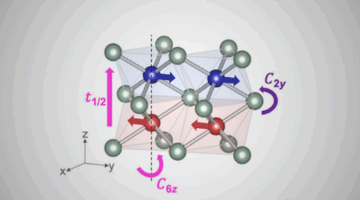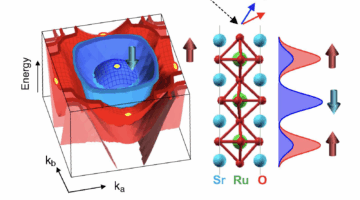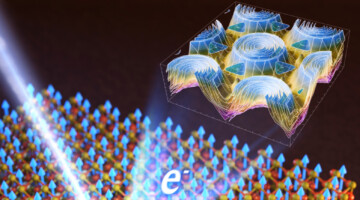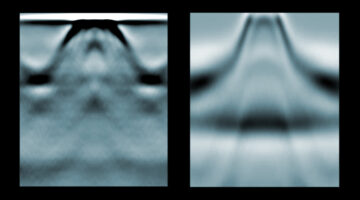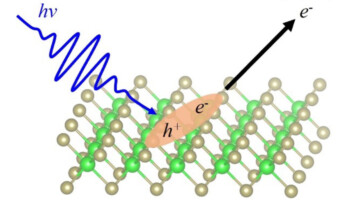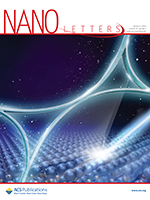Researchers determine the unique electronic structure of altermagnets, which offers numerous benefits in creating energy-efficient devices based on spin-polarized electron currents. Understanding how altermagnetism works could contribute to the development of next-generation memory, logic, or sensing devices that are faster and consume less power. Read more »
Designing Quantum Materials for Future Electronics
Researchers bring theory into practice and confirm a new material’s characteristics at the ALS. The study opens new opportunities to design a substance that renders extra “handles” on the electron—not just its charge, but its spin and valley—so we can build computers that are faster, cooler, and more energy-efficient compared to traditional electronics. Read more »
Pinpointing Magnetic Mysteries and Mechanisms in a Layered Perovskite
The strontium ruthenate family has a perovskite-like structure that can assemble into different configurations, offering an ideal way to study how the physics change as the material goes from 3D to 2D. In this study, researchers revealed how electrons with different spins behave in distinct layers of a three-layer magnetic material. The results deepen the field’s understanding of how magnetism emerges in layered materials, an important concept for future magnetic technologies and quantum electronic devices. Read more »![]()
![]()
Not All Gaps Are Created Equal
Researchers found that charge density waves (CDWs) in topological materials induce unconventional spectral gaps in the materials’ electronic structure. The finding that CDWs in topological materials can be essentially different from those in other materials should be carefully considered when designing quantum devices. Read more »![]()
Lattice-Dependent Spin Textures in High-Tc Superconductors
Researchers found that in bismuth-based cuprate superconductors, charge imbalances caused by lattice distortions generate persistent and universal patterns of spin polarization. The results supply a previously missing but essential ingredient in efforts to understand the mechanisms driving the electronic behavior of high-temperature superconductors. Read more »![]()
![]()
Stabilizing Pristine α-Sn Thin Films for Topological Investigation
Researchers developed a recipe for the room-temperature stabilization of thin films of α-Sn, a form of elemental tin that exhibits a variety of topologically nontrivial phases, but only at low temperatures. By dramatically reducing contamination from the film’s substrate, the recipe greatly simplifies electronic structure studies. Read more »![]()
Room-Temperature 2D Magnet: Electronic-Structure Insights
Researchers found that small changes in how electron spins interact with each other can make a big difference in the magnetic transition temperatures of 2D magnets. Understanding such factors can help create better magnetic materials for information storage, sensors, medical imaging, and energy-efficient computing. Read more »![]()
![]()
Building a Two-Dimensional Magnet One Atom at a Time
Researchers synthesized a new two-dimensional ferromagnet and measured how its electronic and magnetic properties evolve with increasing thickness and temperature. Such atomically thin magnetic materials with tunable magnetic properties would be very useful in next-generation microelectronic and spintronic applications. Read more »
Excitons Dance the Two-Step in a 2D Material
Excitonic insulators are a rare form of macroscopic quantum state that can be realized at a high temperature, which can be useful for quantum information science. At the ALS, researchers found that in a 2D material, a novel two-step “folding” behavior in the ARPES data signals the existence of an intermediate exciton gas state. Read more »
Dirac Nodal Line in Hourglass Semimetal Nb3SiTe6
Hourglass fermion in an electronic band structure is protected by the nonsymmorphic symmetry of a layered semimetal Nb3SiTe6. Angle-resolved photoemission spectroscopy demonstrates the band features of an hourglass fermion in k-space, such as band crossings and nodal loops. Read more »
- 1
- 2
- 3
- 4
- Next Page »
